Statistics say that 35% of companies worldwide use AI tools in their daily business operations. On top of that, 82% of cloud companies already offer AI-powered features in their SaaS products, and SendPulse is one of them.
Here’s a brief overview of what SendPulse has accomplished within a year of ChatGPT release:
- integrated ChatGPT with our chatbot and live chat builder to generate automated replies;
- added Whisper, an automated speech recognition system, to our chatbot and live chat builder to convert subscribers’ voice messages into text;
- enabled users to generate chatbot flows based on prompts;
- let users create or polish their website copies.
AI tools empower digital experts across all industries to streamline all kinds of routine tasks. SendPulse marketers, for instance, have effectively utilized Midjourney-generated images and ChatGPT-written ads in targeted webinar promotions.
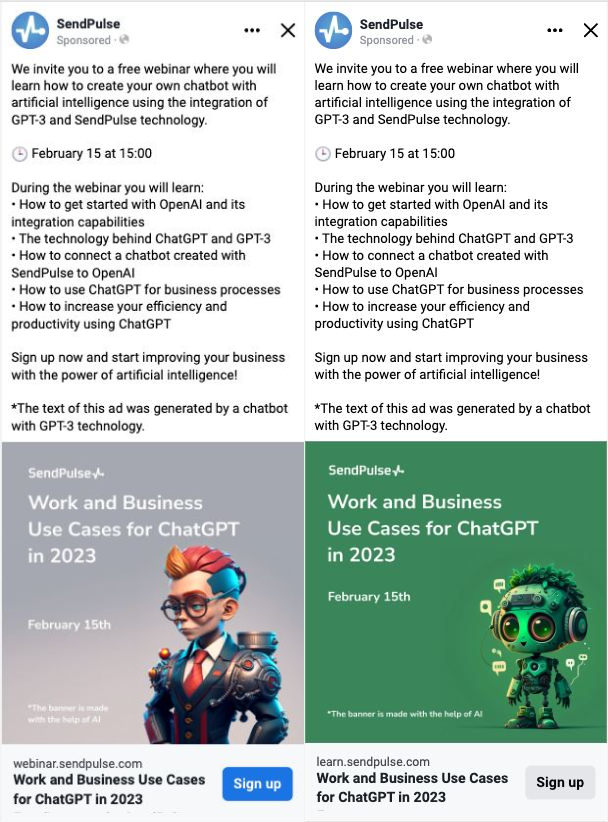
Ads generated by AI showed better results than those created by a human designer and copywriter.

By the end of 2023, SendPulse users were able to integrate their chatbots with OpenAI’s DALL-E-3 to create detailed and high-quality images based on prompts.

SendPulse developers incorporated a prebuilt AI image generation flow into our chatbot builder — users only need to add their OpenAI API key to it.
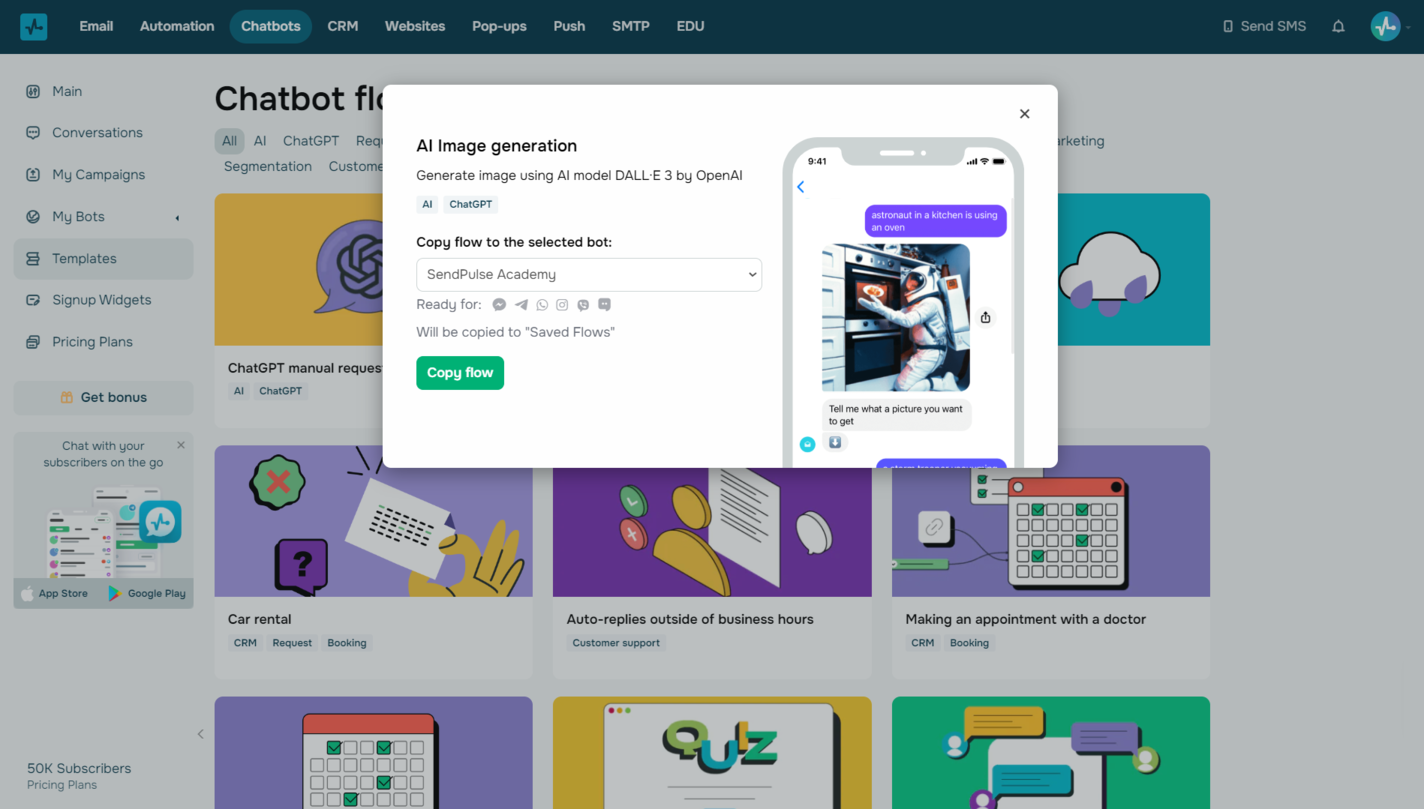
Still, AI possibilities extend beyond text processing, image generation, and flow building. We will talk about how EdTech marketers at the SendPulse Academy have significantly sped up their online course development process using AI tools and explore the results and feedback from students.
Content:
What is the SendPulse Academy?
The SendPulse Academy is an eLearning initiative that provides accessible digital marketing education for all. Our dedicated team hosts free webinars and online conferences, crafts training programs, and shares insightful guides and checklists.
Our courses cater to digital marketing beginners and seasoned professionals alike. Students can master SendPulse’s no-code chatbot builder, email service, website builder, and online course builder.
At the SendPulse Academy, we offer versatile courses and webinars covering topics like email marketing, chatbot development, social media marketing strategies, lead generation, and more.
We developed all of our courses with SendPulse’s online course builder to be able to monitor students’ learning journeys using only one tool. This way, we can create courses using an intuitive drag-and-drop editor, craft customized course landing pages, interact with students through multiple communication channels, track students’ progress, and issue certificates of completion.
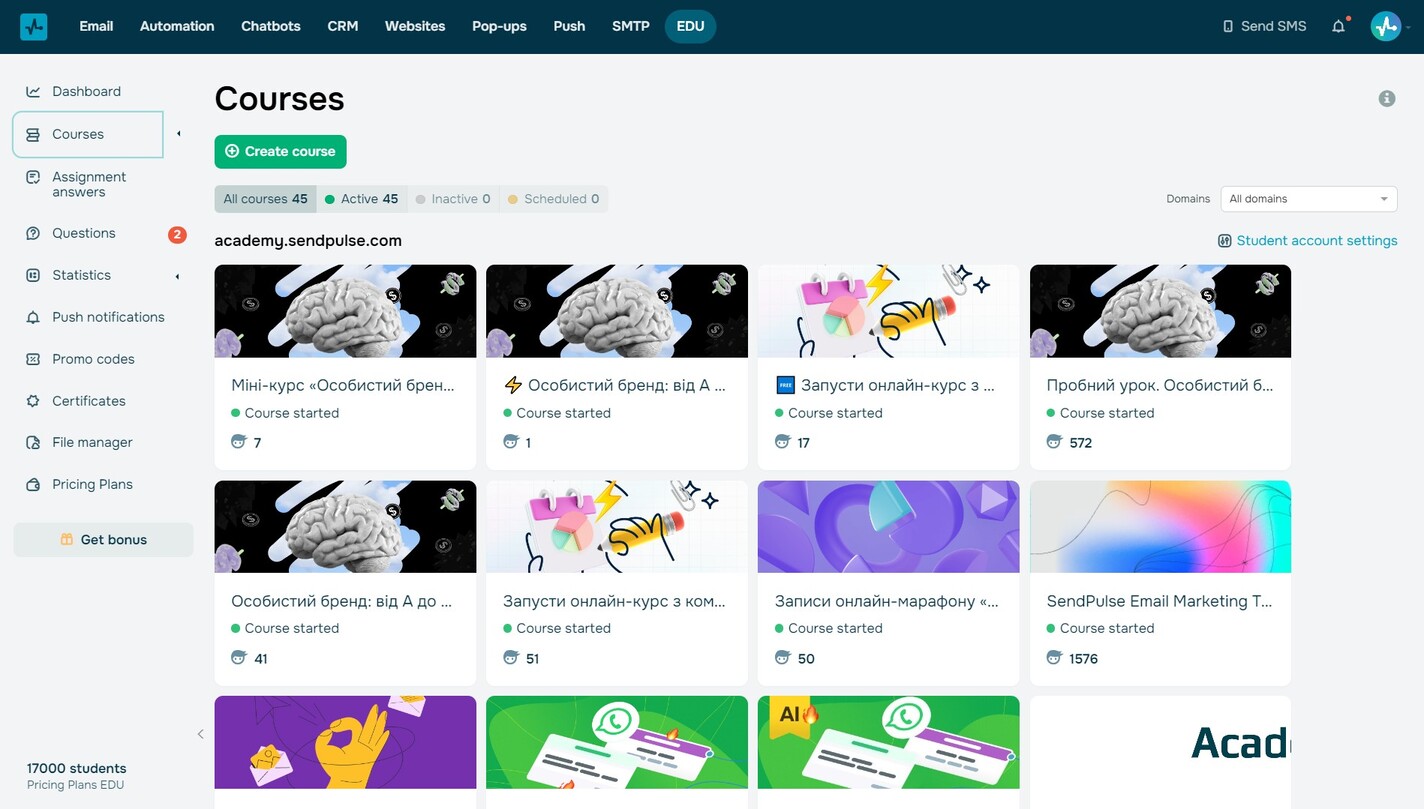
Our experts are continually enriching our library with new courses and refining existing ones. Currently, the SendPulse Academy boasts a collection of 32 courses to offer relevant and up-to-date knowledge.
How we developed a course faster with an AI avatar
Creating an online course demands meticulous effort, time, and great resources, which is why we never take planning and preparation lightly. Our course development process always involves several key steps:
- come up with a course structure and outline our sections and lessons;
- develop our course content plan and produce lesson scripts, presentations, images, screencasts, etc.;
- compile tests and assignments to evaluate students’ knowledge and skills;
- record and edit course videos;
- upload our content to the course builder;
- design our certificates and course landing pages.
Elai.io offers more than 80 video avatars — these are prerecorded actors who “voice” your uploaded text. Elai.io implements lip sync technology, synchronizing your avatar’s facial expressions with the text.
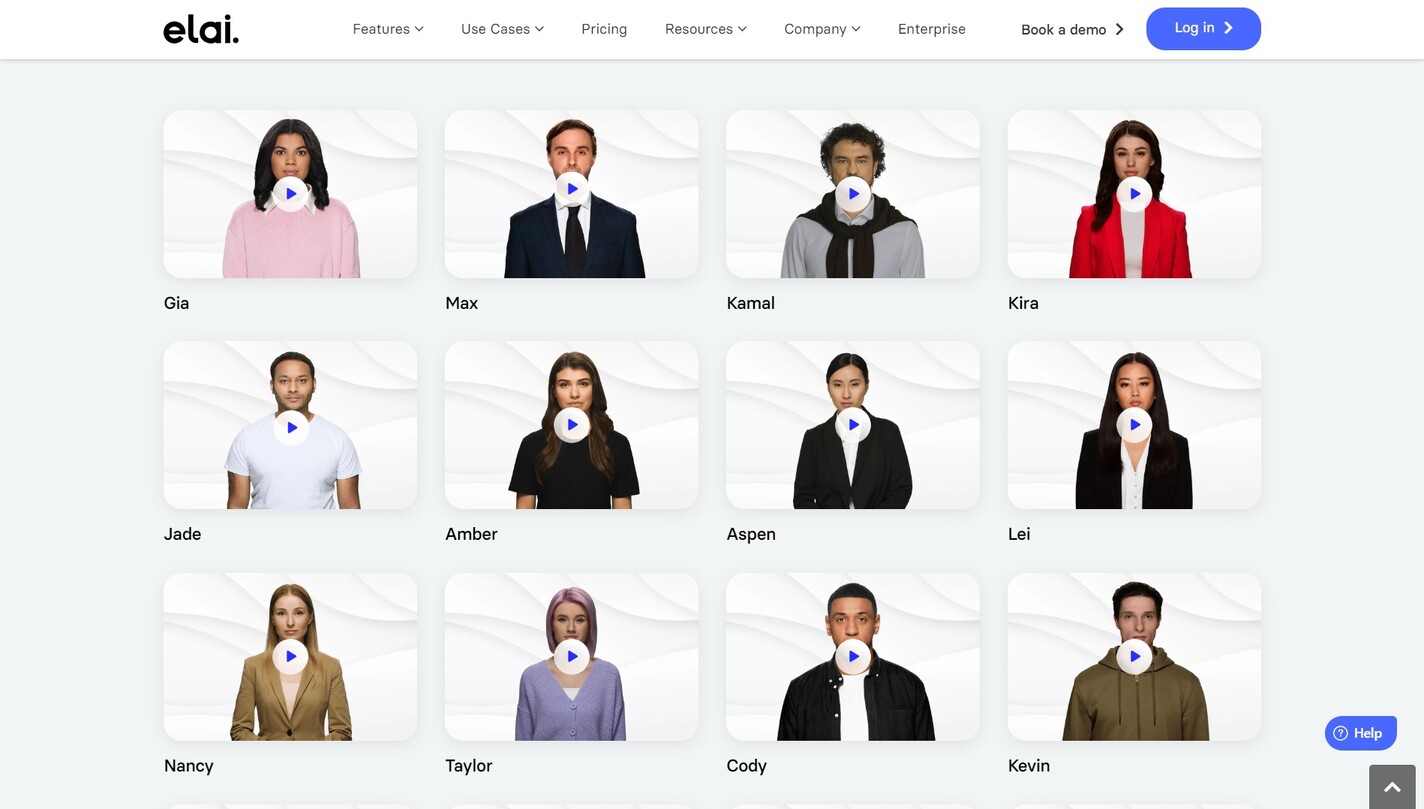
Apart from ready-made AI presenters, this tool allows you to create your own avatar — you can upload your photo or video and generate a personalized avatar based on it.

Elai.io supports 28 languages, so you can choose your avatar’s voice or record your own and even duplicate it in another language.
Introducing our AI course speaker, Cody
“We decided to get started by choosing an avatar for our WhatsApp chatbot development course. We picked two avatars and put them to a vote. Our team chose an avatar named Cody.
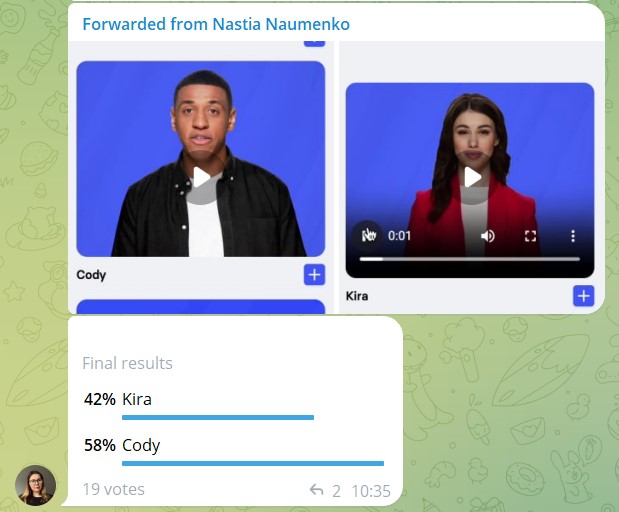
Next, we picked Cody’s clothes and voice and uploaded our lesson scripts,” says Anastasiia.
Elai.io allows you to upload your own background and add text, images, emoji, and other elements to your video to make your lesson more value-packed and captivating.
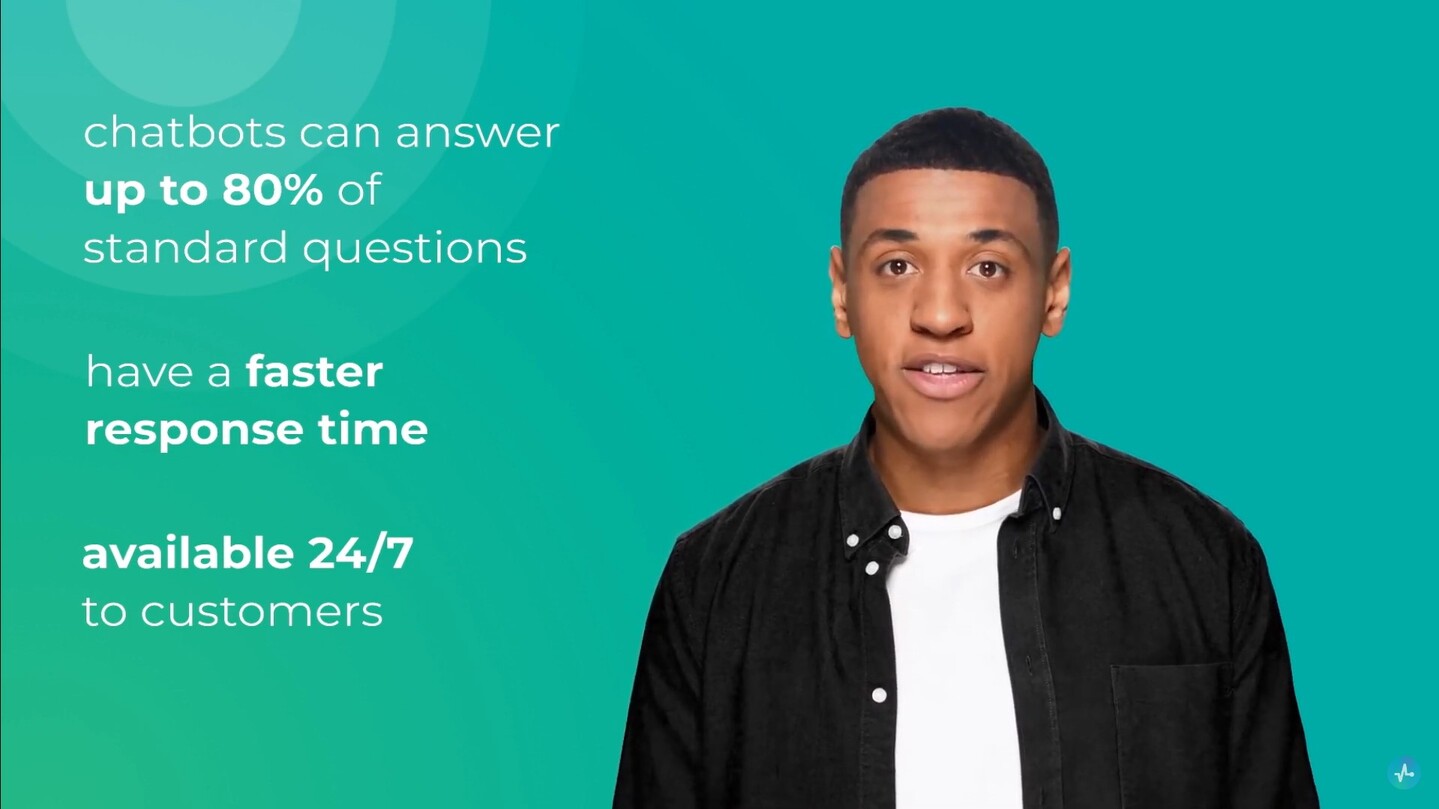
You can add subtitles, adjust your presenter’s position in the frame, personalize specific elements’ effects, and animate the frame.
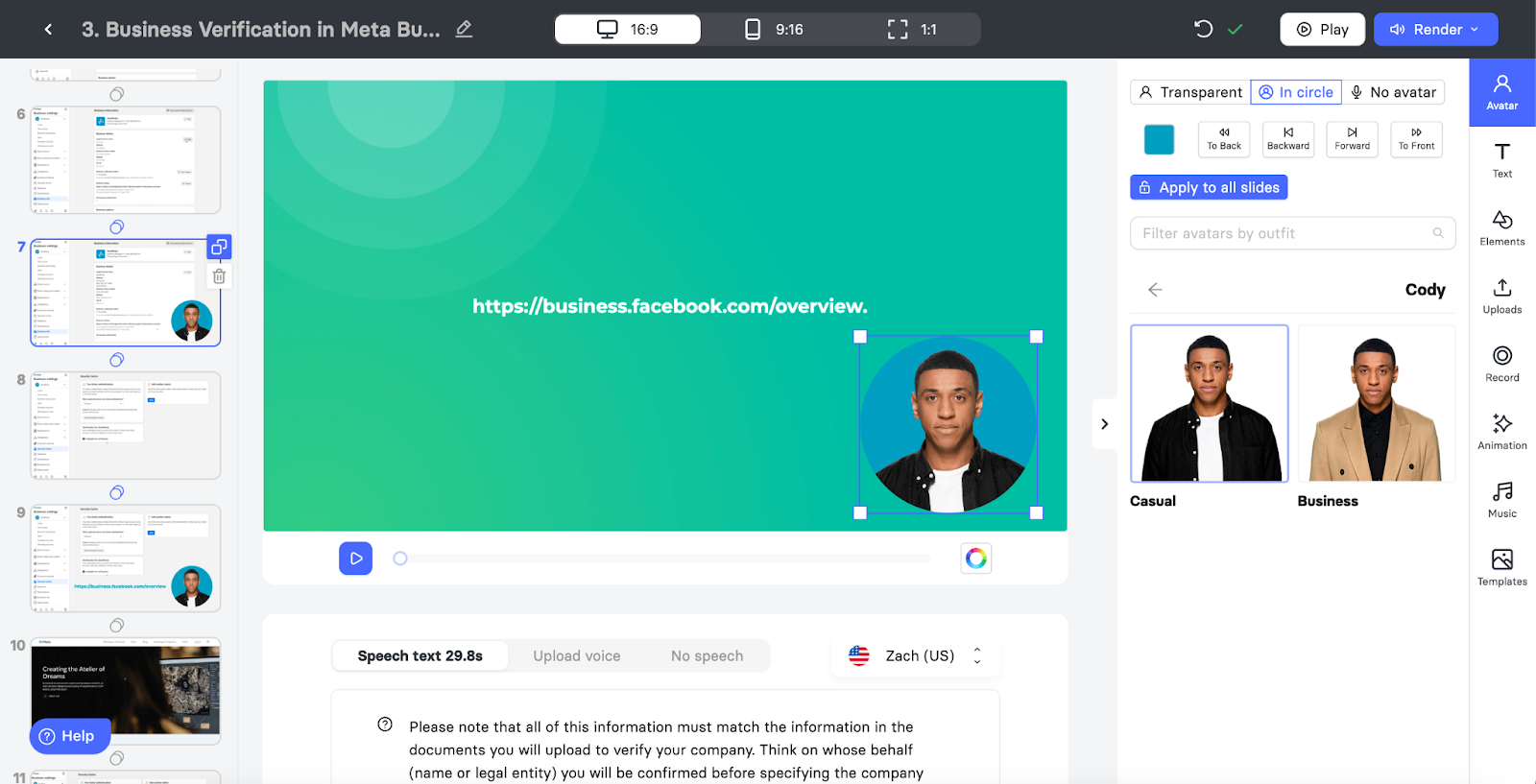
When your lesson is ready, click “Start render” to animate your avatar and edit your video.
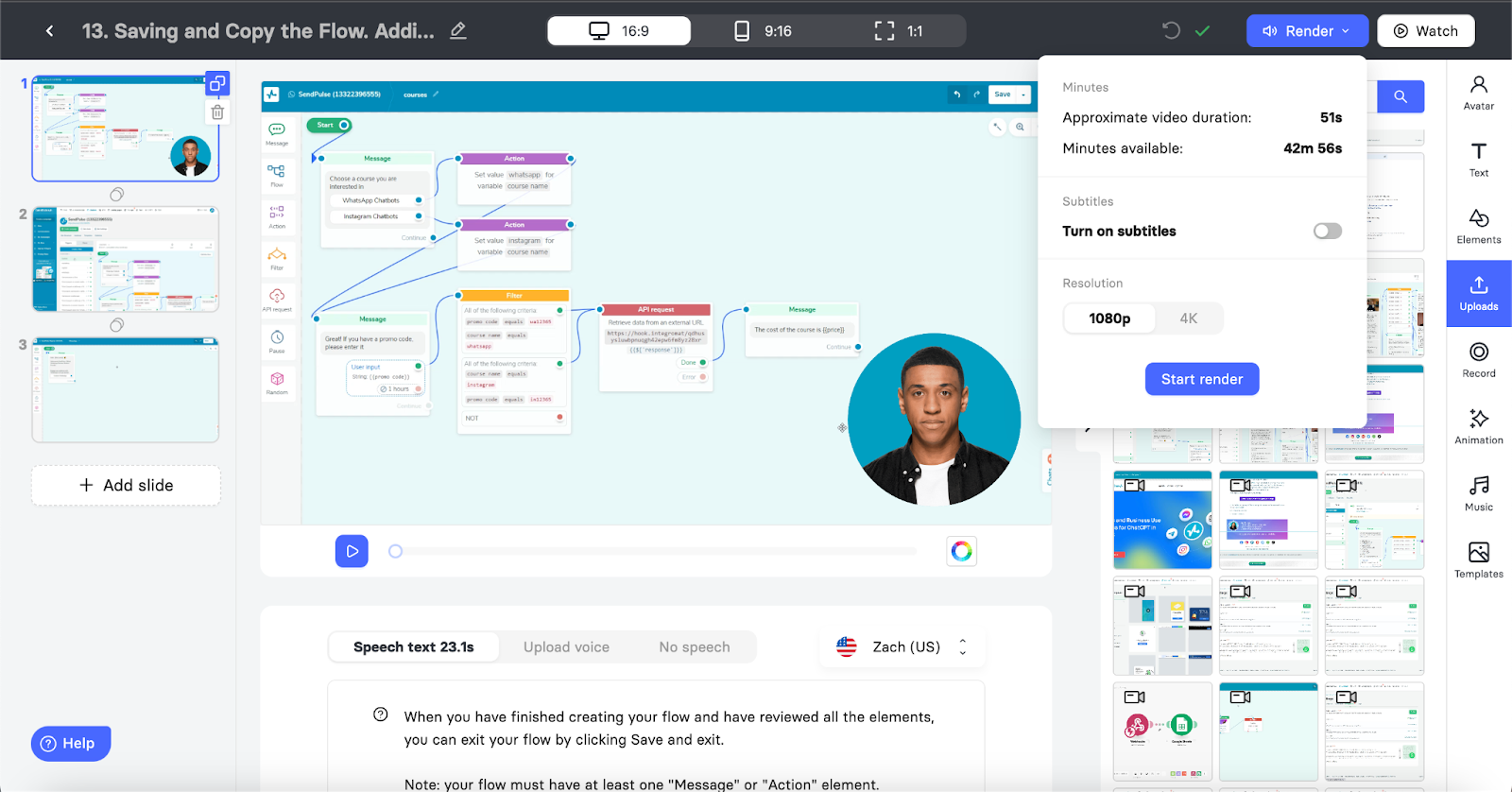
When your online course video is ready for download, you’ll receive an email.

You can upload your lessons to SendPulse’s online course builder. Here is what one of our lessons with Cody’s avatar looks like.
Enabling students to sign up for the course
“After uploading our lessons, we moved on to our course settings. We made our course free and decided that students would need to take and complete all the lessons to get a certificate. We also placed our course on the results page as a recommendation to students who completed similar courses. This approach proved successful, allowing us to draw in 270 students without any promotion,” shares Anastasiia.
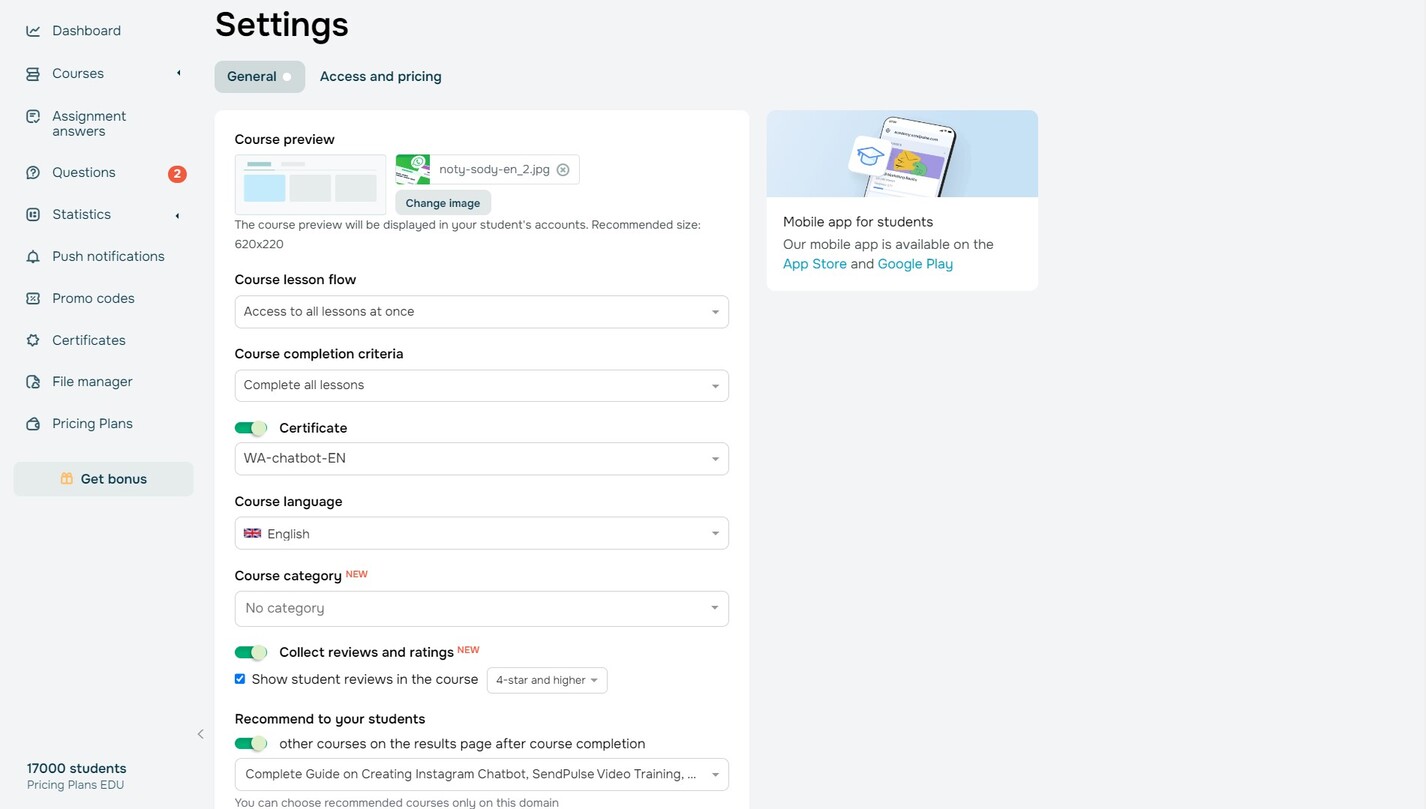
Afterward, we designed our course landing page and mentioned that our speaker is an AI-generated avatar.
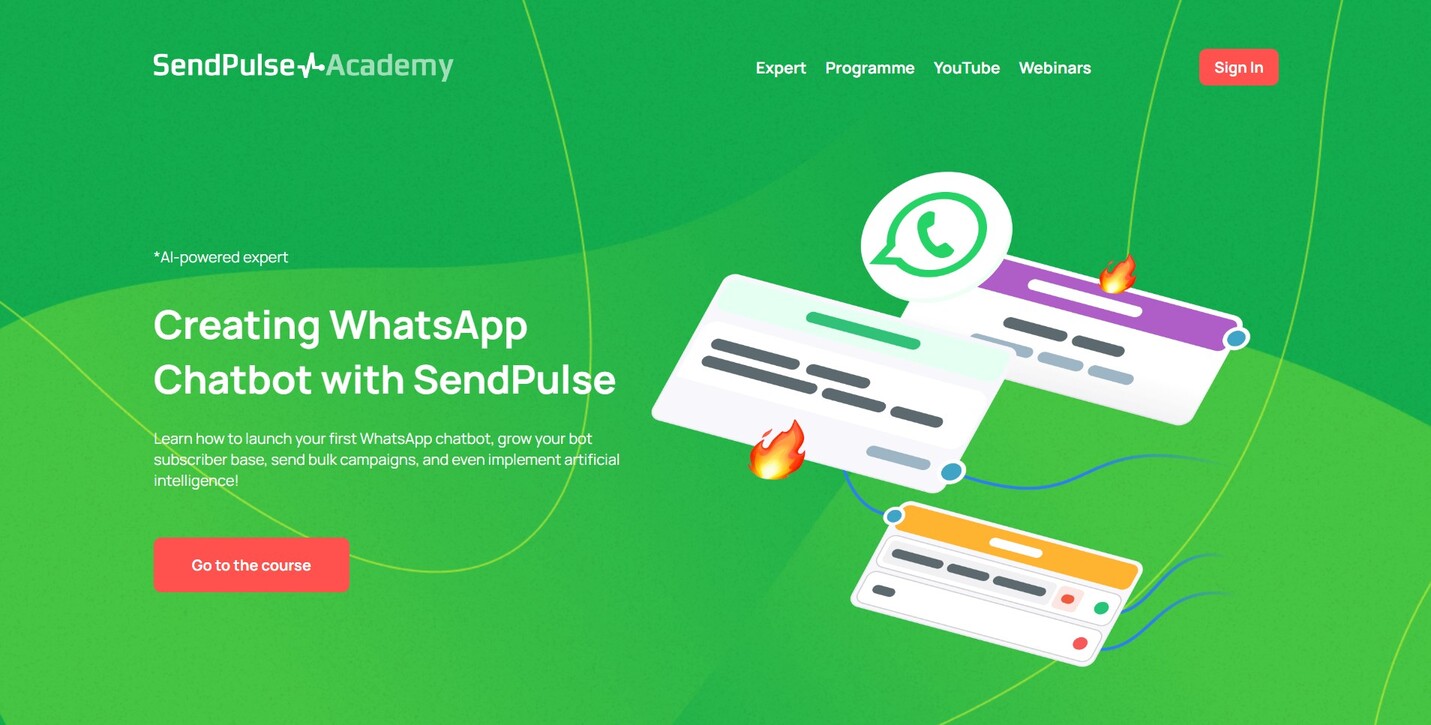
We also added Cody’s photo and introduced him to our potential students.
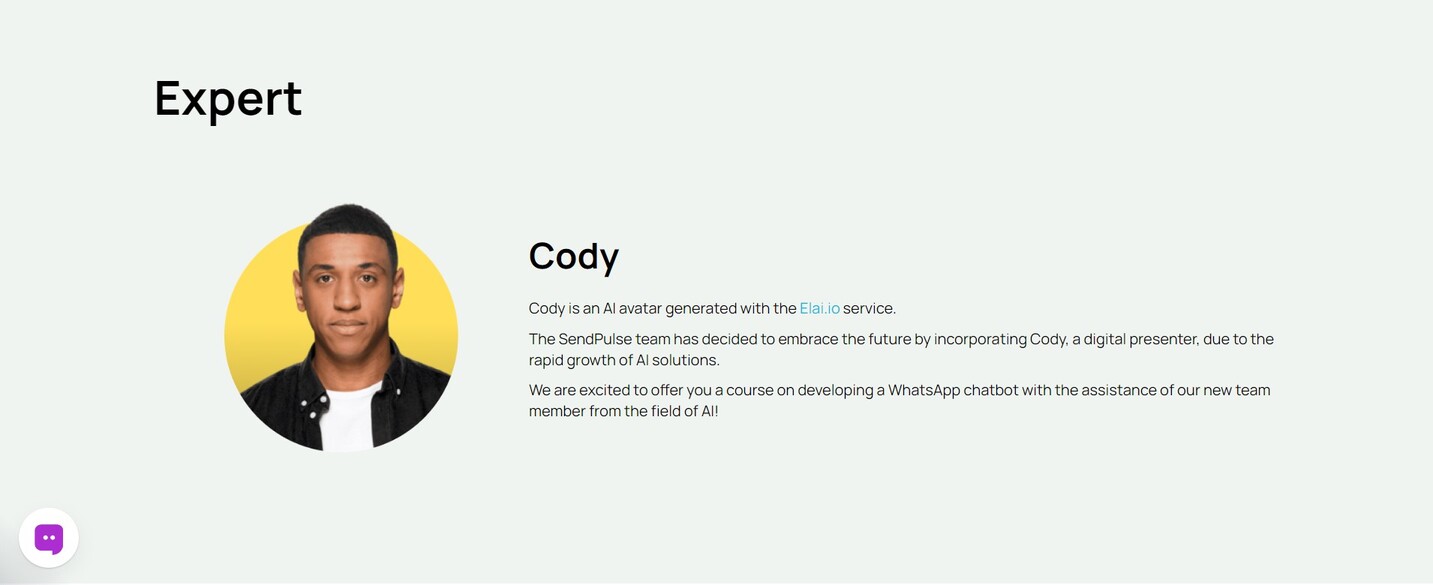
Before promoting our online course, we decided to collect feedback from our first students so that we could tweak our marketing strategy accordingly.
How we gathered student feedback on our AI avatar
To understand how students perceive Cody’s lessons, our EdTech marketers added a quick NPS survey at the end of our first module. We asked students to rate our course speaker on a scale from 1 to 10 and leave a short comment if they had more to say.
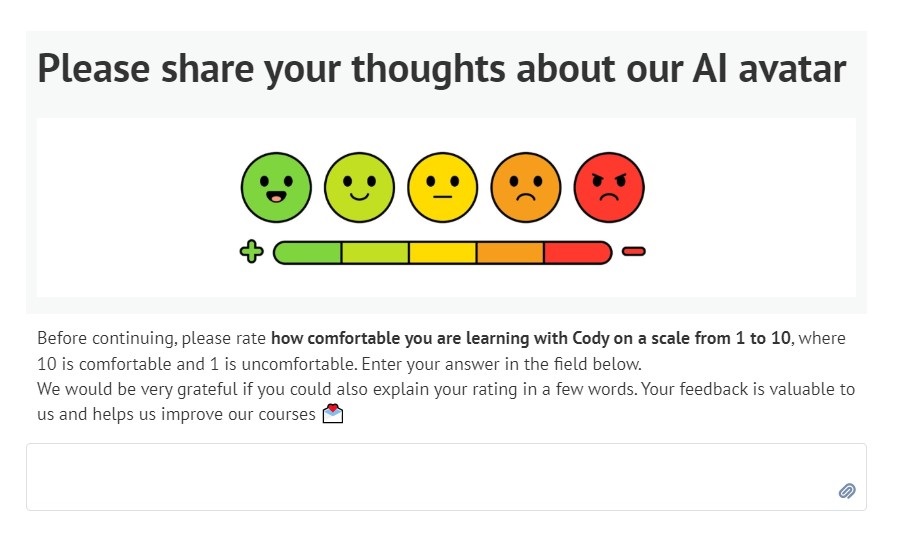
We assessed our online course’s Net Promoter Score (NPS), a measure of student loyalty. The NPS scale ranges from -100% to 100% and is calculated as follows:
NPS = (Number of Promoters – Number of Critics) / Total Respondents × 100%
The formula classifies respondents into three groups:
- Promoters. Users who rate a product highly, typically with 9 or 10 points, and are likely to recommend it to others.
- Neutrals. Users who neither strongly like nor dislike a product, often giving it 7 or 8 points.
- Critics. Users who are dissatisfied with a product, rating it between 0 and 6 points.
An NPS above 70% is outstanding, showing high loyalty and a strong likelihood that these users will recommend your product. Scores between 50% and 70% suggest that users are satisfied with your product, while a score below 50% indicates that your product needs improvement based on critics’ feedback.
“Overall, 35 students provided feedback about our course. 24 of them were promoters, giving Cody 9 or 10 points. Four were neutrals, rating our speaker from 7 to 8, and seven were critics with scores from 0 to 6. Our NPS was 48.57%, meaning that our course needed improvement. To figure out our next step, we delved into student feedback,” Anastasiia explains.
Our promoter students mentioned they felt comfortable learning with Cody. They thought that the lessons were easy to understand and appreciated this unusual experience.
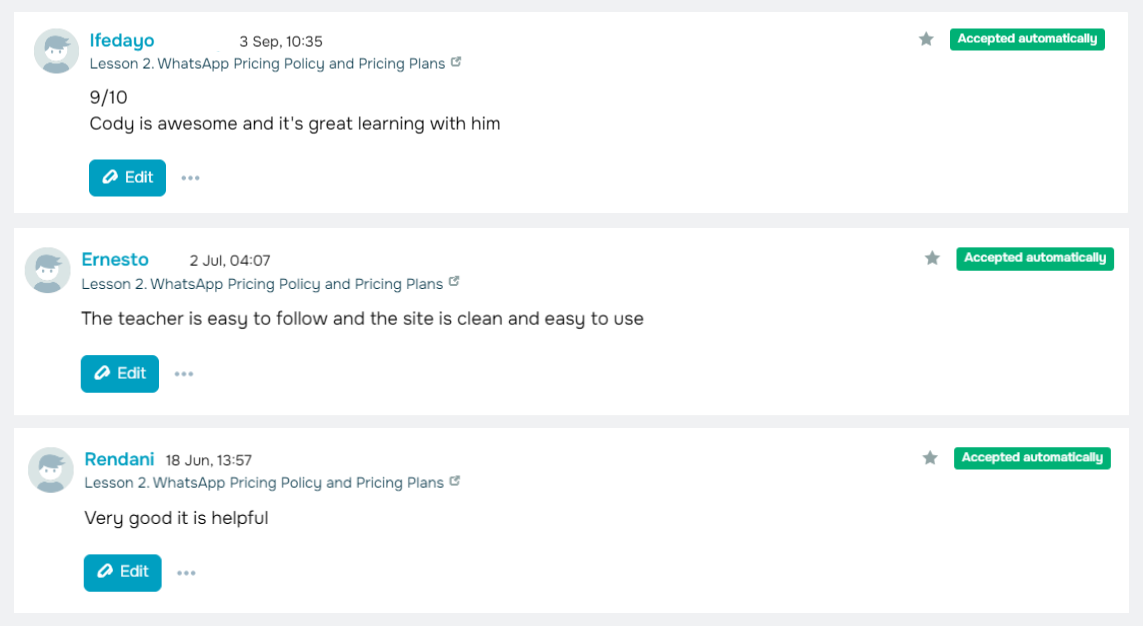
Users who provided moderate or low ratings highlighted challenges in engaging with an “inanimate” course presenter due to asynchronous pronunciation, causing distractions. Some students even suggested using a cartoon character instead of a human avatar.
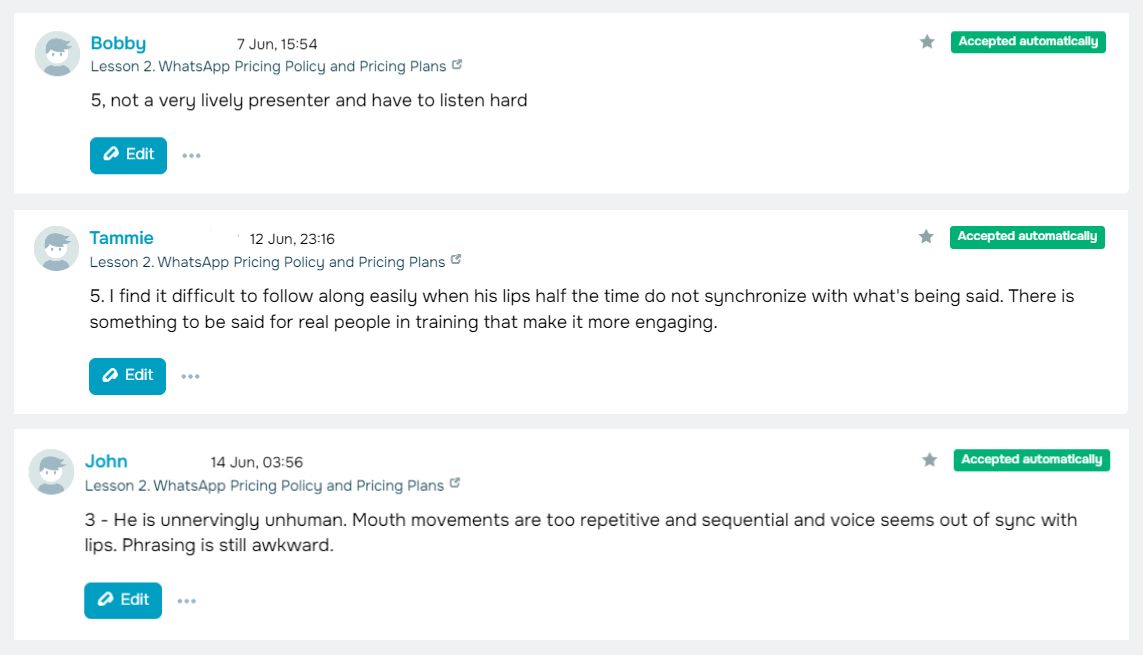
“Encouraged by the positive feedback, we kept the ball rolling with our experiment and made another course using an AI avatar. This time, we dove into the basics of email marketing. The course got a solid 52.4% Net Promoter Score (NPS), showing that while students are still getting used to AI avatars and their quirks, most of them actually loved learning with Cody.
This is a very promising and innovative technology that is actively developing, which suggests a promising future,” concludes Anastasiia.
Our colleagues from SendPulse Brazil also created their own email marketing course. They went with a different avatar called Janaina to teach in Portuguese, showing that AI avatars can adapt to various languages.
Upsides and downsides of AI avatars
The clear advantage of using AI avatars is the substantial budget savings they bring. No need to shell out for studio rentals, a videographer, or an editor — you can create top-notch videos from the comfort of your home.
Another big plus is the time saved. Forget the hassle of setting up shoots and dealing with post-production headaches. With AI avatars, you can jump straight into inviting students to dive into their studies. Just look at the SendPulse Academy — we went from crafting our course script to rolling out the finished product in just two weeks. Normally, this kind of work could drag on for a month or more.
AI avatars can also save you the trouble of finding a native speaker if you are targeting a foreign audience. You can write and spellcheck your script and let your avatar do the talking. It will deliver your message in the language of your choice with the right intonation and even the accent you pick!
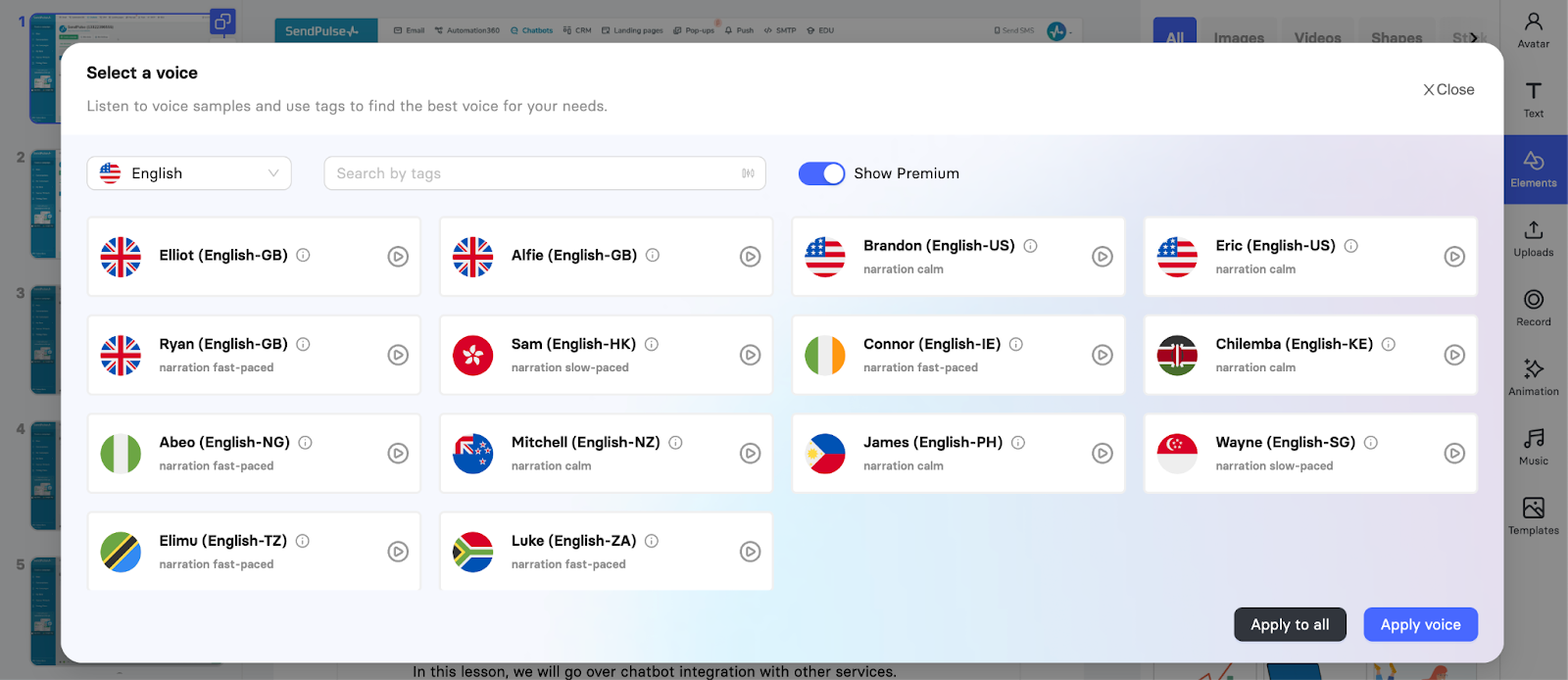
“We also use Elai.io for video instruction voiceovers in the SendPulse knowledge base. This has significantly cut down on production costs and ramped up the speed of creating these videos,” shares Anastasiia.
On the flip side, there are some shortcomings to using AI avatars, as pointed out by our students. Occasionally, the words don’t sync perfectly with the speaker’s articulation. Our avatar hardly used any gestures, which made it seem a bit robotic at times. However, the developers assure us that they’re actively addressing these concerns.
“There were moments when certain words came out unclear or with an incorrect accent,” Anastasiia recalls. “I had to pay extra attention, rephrasing sentences and swapping out words to make sure our avatar articulated them right.”
Conclusion
AI tools can simplify and speed up many digital creators’ routines. You can enhance your script, craft images, generate chatbot flows, and even use AI avatars in training or promotional videos.
Using an AI avatar proves to be a time and cost-saving strategy. Despite the slightly artificial appearance of our speaker, the majority of the SendPulse Academy students were comfortable with this experimental approach.
To form your own insights on AI avatars, sign up for the SendPulse Academy courses. It’s an opportunity to enrich your knowledge of email marketing and chatbot development while gaining valuable experience. And, of course, we would be glad to hear your thoughts on Cody!





![How to Start an Online Course Business [2024 Guide]](https://www.spcdn.org/blog/wp-content/uploads/2024/09/course-business-cover-255x167.png)


